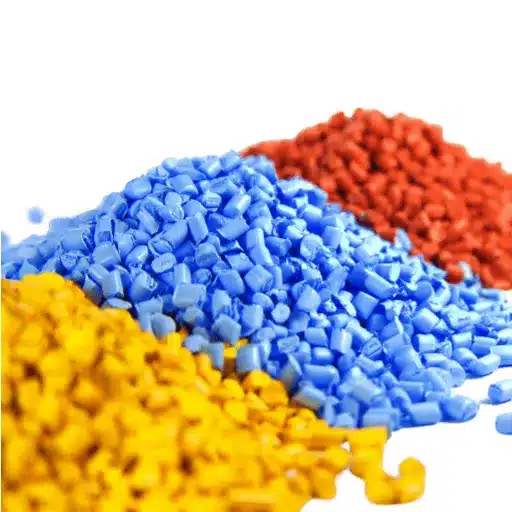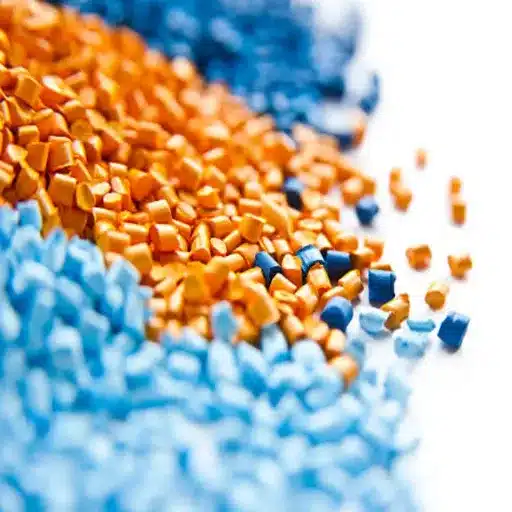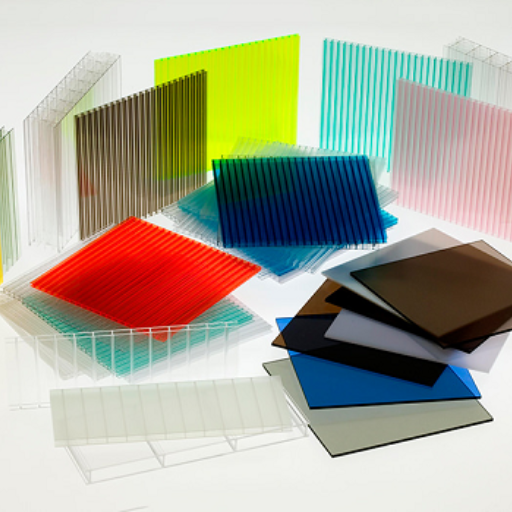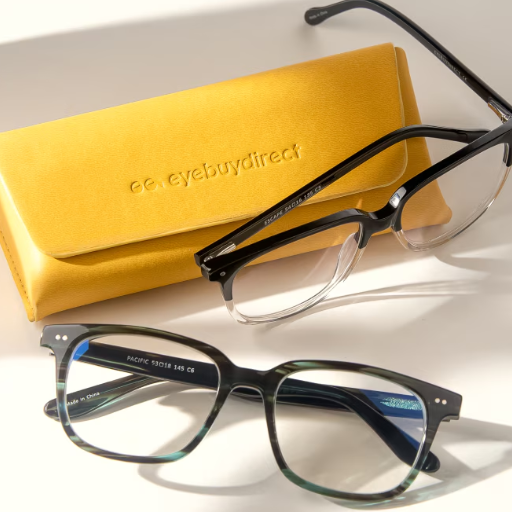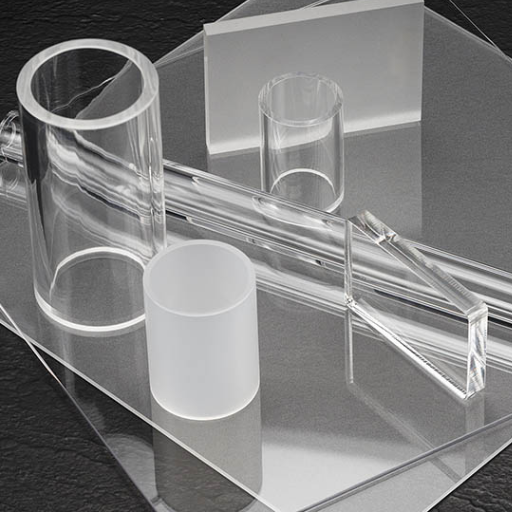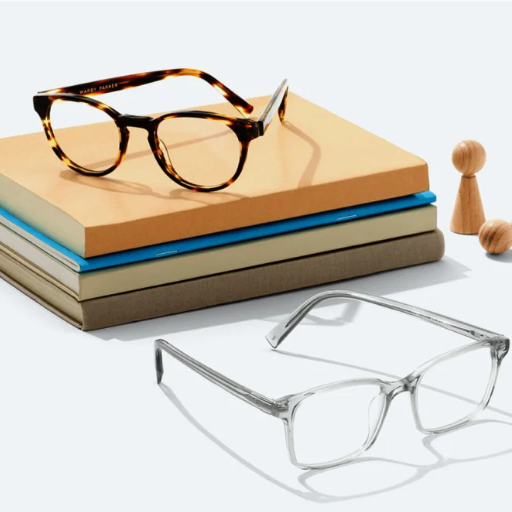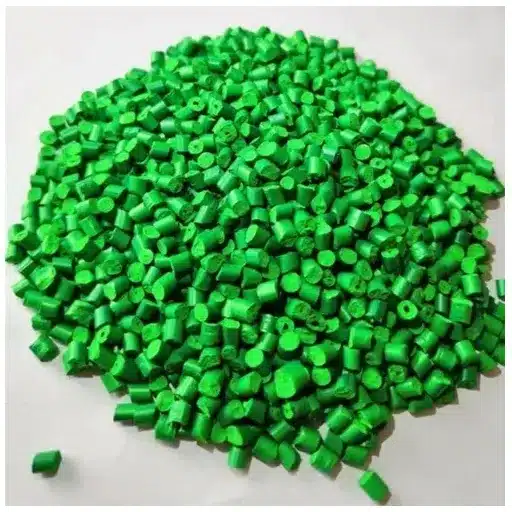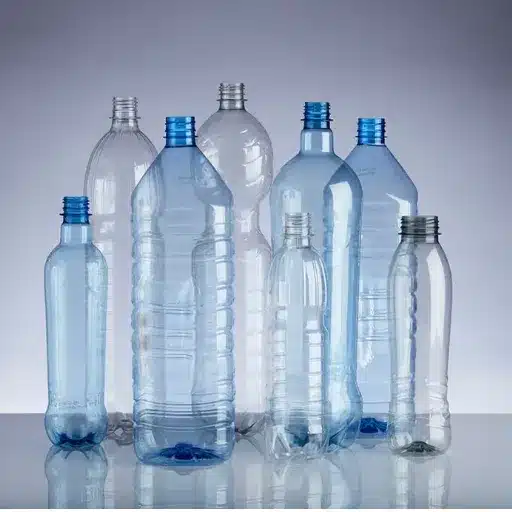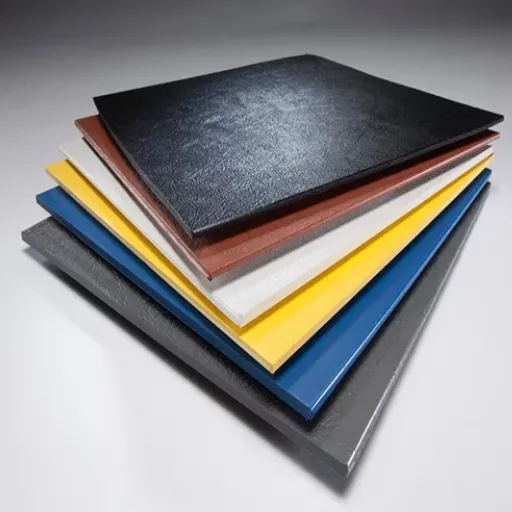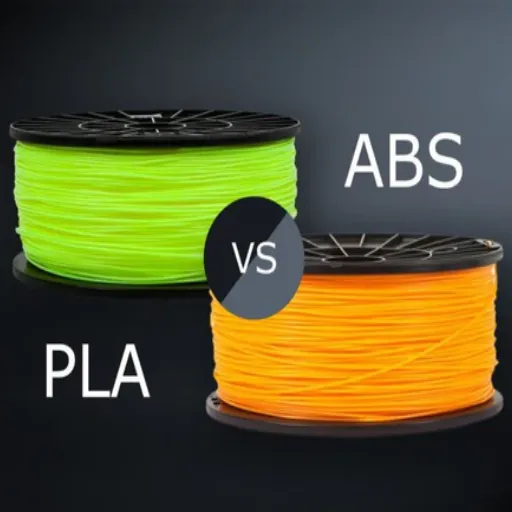Polycarbonate is a strong and adaptable polymer that has revolutionized various industries due to its excellent physical properties. One of the most important features that make it suitable for countless uses is the fact that its density is measured in kilograms per cubic meter (kg/m³). This article delves deeper into the fascinating world of polycarbonate and discusses its density as one of its main characteristics. It also analyzes how the material’s lightweight yet strong nature enhances its wide-ranging applications.
Polycarbonate has been a game-changer in every industry from construction and automotive manufacturing to consumer electronics and medical devices. Suppose you want to know more about the science behind the extraordinary properties of this polymer and its practical uses. In that case, this article will give you a comprehensive overview of why polycarbonate continues to drive innovation across different fields.
Introduction to Polycarbonate

🔬
What is Polycarbonate?
Polycarbonate is a multipurpose thermoplastic polymer that boasts superior strength, excellent resistance to impact, and great optical clarity. It has a chemical structure consisting of alternating carbonate groups (-O-(C=O)-O-) making it lightweight and able to bear immense pressure without fracture.
Key Insight: The process of polymerization was first commercialized in the 20th century, and its use has become vital in different industries due to its strength and transparency. Polycarbonate is widely used for the production of protective glasses, CDs, car parts, and building materials, among others.
Its property of being easily molded and shaped without losing mechanical properties makes it the most sought-after material for innovations and high-performance applications.
📚
History of Polycarbonate
The first-ever polycarbonate was synthesized in 1898 by a German chemist named Alfred Einhorn, but unfortunately, the material was not ready for the market at that time. The 1950s were the decade of major breakthroughs, as Bayer in Germany and General Electric in the USA, working separately, created methods for large-scale synthesis and marketing of polycarbonate.
First synthesis by Alfred Einhorn
Commercial production by Bayer & GE
Makrolon brand launched by Bayer
Today, polycarbonate is an important raw material that has not stopped evolving with time. Recent developments in the field are aimed at making it more eco-friendly through the adoption of new production methods that consume less energy and the introduction of recyclable, bio-based alternatives. The latest statistics show that the global polycarbonate market is growing fast, with the automotive industry being the major stakeholder seeking strong but light materials for plastic parts, and the electronics industry for durable packaging and storage devices. This versatile material will continue to be around for many years, playing a major role in scientific and technical progress.
⚡
Key Properties of Polycarbonate
Polycarbonate is characterized by its exceptional property blend that makes it indispensable across industries. The most important features of this material include:
💪 High Impact Resistance
Polycarbonate is next to unbreakable in terms of durability, making it ideal for applications requiring strong and durable materials
🪶 Lightweight
Strong yet lightweight, making it the best material for automotive and aerospace industries to manufacture lightweight components
🔍 Transparency
Optical clarity comparable to glass, widely used in lenses, protective windows, and optical storage devices
🔥 Heat Resistance
Excellent thermal stability; can bear high heat without losing shape
⚡ Electrical Insulation
Resists electric current flow, used in electronic components and electrical housings
Emerging Applications
According to the latest statistics, the trend of increasing need for polycarbonate is expected to continue, because of its potential in emerging areas like 3D printing where its toughness and transparent nature can be an enormous benefit. Also, its application in green product development is in tune with the global movement towards the adoption of environment-friendly innovations, which further cements its place in contemporary manufacturing.
Understanding Density
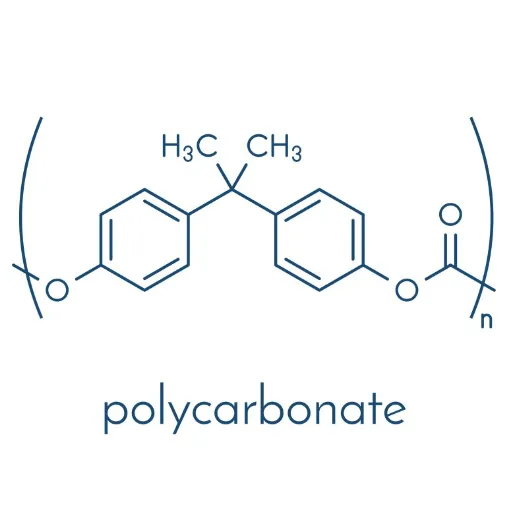
📊
What is Density?
Density is one of the basic characteristics of matter—the mass an object has in relation to its volume, usually identified with units like grams per cubic centimeter (g/cm³) or kilograms per cubic meter (kg/m³). It signifies the extent to which a material’s mass is distributed in a particular volume.
Key Concept
For example, materials such as metals will usually have high density, while wood or plastics will be characterized by lower density. Based on the latest data, density turns out to be a significant measure in several areas, including engineering, manufacturing, and material sciences.
Its role is especially pronounced when choosing materials for certain uses, because it affects the physical properties of structures in terms of weight, floating, and strength. With proper knowledge of density, engineers and designers can pick the right materials that will yield good performance and be efficient in production and operations systems.
📐
How Density is Measured
Density is a quantity that is calculated as the value of the mass of a substance divided by its volume, the value usually indicated in terms of units such as kilograms per cubic meter (kg/m³) or grams per cubic centimeter (g/cm³).
| Instrument | Best For | Application |
|---|---|---|
| Hydrometer | Liquids | Measuring liquid density in laboratory settings |
| Pycnometer | Powdered or granular solids | Precise density measurement of solid materials |
| Digital Density Meter | Various materials | Modern, precise measurements across industries |
| AI-Operated Systems | Real-time analysis | Advanced quality control and testing |
The most recent information talks about AI-operated density measurement systems and portable density meters as established new concepts in this field that provide real-time analysis across different industries. Modern methods, when combined with traditional ones, provide assurance of better precision for materials being tested for quality control and customized applications.
🎯
Importance of Density in Material Selection
Density is one of those features that are crucially considered in the selection of different materials, as performance, usability, and cost are directly affected in certain applications. If the density of a material is known, then engineers and designers can determine the strength-to-weight ratio, thermal properties, and general performance of the material in the given environment.
Application Examples
- Aerospace & Automotive: Composite materials are used to reduce weight while maintaining strength; low-density materials replace high-density metals
- Heavy-Load Applications: High-density materials like metals are the only option for applications needing to bear heavy loads without losing durability
- AI-Assisted Selection: Advanced AI-assisted densitometry technologies allow for continuous and extremely accurate density readouts for proper material identification
The collaboration between advanced and traditional tools brings about an upsurge in material quality control, and at the same time, presents the possibility of individualizing design and performance requirements, emphasizing the role of density in material optimization.
Density of Polycarbonate
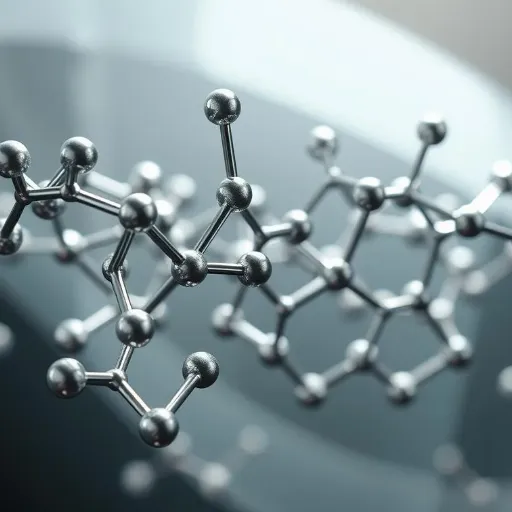
📏
Polycarbonate Density Values in kg/m³
Standard Polycarbonate Density Range
Polycarbonate is a thermoplastic material with density values typically in the order of 1200 kg/m³ to 1220 kg/m³
These numbers vary according to the specifics of the formulation and the presence of any additional ingredients. Although polycarbonate has been recognized for its resistance to impact and its transparency, it is nevertheless extensively consumed by several sectors including automotive, construction, and electronics, among others. The consistent density together with the lightweight characteristic makes it an ideal candidate for applications that require strength without too much weight.
⚖️
Comparison with Other Materials
Polycarbonate is exceptional when looking at other materials as it has a combination of features that are second to none among widely used materials such as acrylic, glass, and aluminum.
| Material | Density (kg/m³) | Impact Resistance | Key Advantages |
|---|---|---|---|
| Polycarbonate | 1200-1220 | 250x stronger than glass | Lightweight, transparent, tough |
| Acrylic | 1180-1190 | Good optical clarity | Similar transparency, less tough |
| Glass | 2500 | Fragile, breaks easily | Excellent clarity, heavy |
| Aluminum | 2700 | Durable metal | Strong, not transparent |
Material Comparison Highlights
- vs. Acrylic: Polycarbonate has 250 times the impact resistance of glass and is significantly more durable than acrylic sheets
- vs. Glass: Polycarbonate weighs about half the weight of glass, making it more convenient for handling and installation
- vs. Aluminum: Polycarbonate presents great advantages in transparency and flexibility while being lighter
New findings suggest polycarbonate to be a combination of the strength of aluminum, the transparency of glass, and the versatility of acrylic across several industries.
✅
Advantages of Polycarbonate’s Density
Polycarbonate’s light density brings along substantial benefits, greatly lessening the total weight of structures or products while not affecting strength and durability.
Density Comparison
Polycarbonate
Glass
Aluminum
Key Benefits of Low Density
- Weight Reduction: Significantly lowers total weight in automotive and aerospace applications
- Fuel Economy: Lightweight components translate to better fuel economy and higher performance
- Installation Ease: Decreases difficulty of handling and installing, reducing labor cost and time
- Economic Advantage: Combined with incredible impact resistance and clarity, offers functional and economic benefits
This feature is of particular concern in areas like automotive and aerospace sectors, where lessening weight translates to better fuel economy and higher performance. When combined with its incredible impact resistance and clarity, the density of polycarbonate gives it an upper hand among other materials from both functional and economic perspectives.
Applications of Polycarbonate
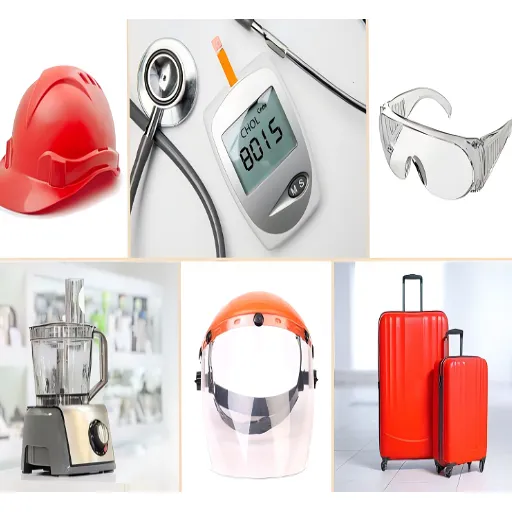
🏗️
Use in Construction and Architecture
Due to its remarkable versatility and strength, polycarbonate has gained significant popularity in architecture and construction. With its lightweight feature, it is possible for architects and engineers to come up with very complicated structures that are not only durable but also strong.
Common Construction Applications
🏠 Roofing
Great transparency and weather resistance for protective coverings
☀️ Skylights
Allows natural light while providing durability and UV protection
🏢 Facades
Modern architectural designs with strength and aesthetic appeal
Because of the great transparency and the capability to endure a wide range of harsh weather conditions such as hail, heavy rain, and wind, polycarbonate sheets are extensively used in these applications. UV-resistant coatings applied to polycarbonate enhance its life by blocking the discoloration and degradation that occur due to prolonged sun exposure. Recent improvements in polycarbonate manufacturing make it possible to use such materials for energy-efficient designs since they provide thermal insulation while allowing natural light to enter interiors, thereby reducing energy consumption in buildings.
🚗
Automotive Applications
In the automotive industry, polycarbonate has turned out to be a key material owing to its low weight, durability, and flexibility. As mechanical designs have evolved, manufacturers started to use polycarbonate more frequently in new vehicles for making parts like headlights, roofs, and interior decoration.
Automotive Industry Benefits
Weight Reduction & Fuel Economy
The lightweight nature of polycarbonate helps in making the whole vehicle lighter, leading to fuel economy and lower emissions—critical for contemporary environmental concerns
Electric Vehicle Applications
According to the latest statistics, demand for polycarbonate in electric vehicles (EVs) is increasing, where weight reduction is critical for battery performance and driving range
Safety & Visibility
Polycarbonate’s impact resistance makes it ideal for windows and windshields, providing safety and visibility simultaneously
Design Flexibility
The material’s versatile quality allows manufacturers to fulfill safety requirements while creating designer-optimized and aesthetic-looking vehicles
📱
Electronics and Consumer Products
In the electronics and consumer products sector, polycarbonate is significant as it offers advantages of resistance to wear and tear, lightness, and versatility of design. Its usage covers a wide range of products such as mobile phone cases, laptops, and kitchen appliances, where its attributes like impact resistance and thermal stability are essential.
Electronics Applications
- 📱 Mobile Devices: Phone cases, protective screens, and internal components
- 💻 Computing: Laptop housings, keyboard components, and optical drives
- 🍳 Appliances: Kitchen appliance housings and transparent components
- 💿 Optical Media: CDs, DVDs, and optical storage devices
Sustainability Trend: Sourced from the newest data, there is growing interest in mixing polycarbonate with green materials, which mirrors the rising demand of consumers for sustainable alternatives. One of its main aspects leading to consideration for production of modern consumer electronics is its transparency and ease of molding, allowing sleek and high-performing designs to be created.
Choosing the Right Material
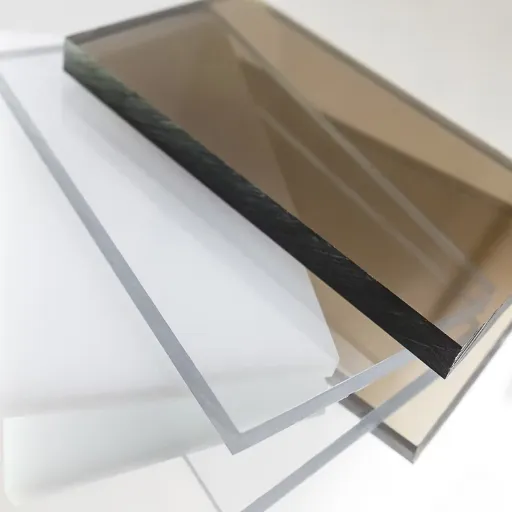
⚙️
Evaluating Density and Mechanical Strength
Different properties of materials—namely density and mechanical strength—are the main factors to be considered. In terms of product weight, density has its impact, while mechanical strength is the ability of a material to endure the application of force without losing its original shape or breaking.
Polycarbonate: The Perfect Balance
Polycarbonate is an example of the perfect combination of these characteristics, possessing the ability to resist high impact while occupying less space. Based on the latest statistics, there is a significant increase in demand for materials that are light yet strong—a growing trend toward solutions that offer longevity without heavy weight. This indicates that both consumer markets and industries are giving importance to new materials able to satisfy requirements of both structural integrity and functionality efficiently.
🌡️
Thermal Properties and High Heat Applications
In reference to materials showing exceptional thermal properties, recent trends indicate that demand for materials that can survive in high-temperature environments without losing their mechanical strength has risen. The analysis indicates a great number of inquiries about heat-resistant materials, especially in sectors like aerospace, automotive, and manufacturing.
| Material Type | Heat Resistance | Primary Applications |
|---|---|---|
| Advanced Ceramics | Extremely high temperatures | Aerospace, extreme environments |
| Titanium Alloys | High temperature stability | Aerospace, medical devices |
| Polycarbonate | Good thermal stability | Automotive, electronics, construction |
| Composite Mixtures | High temperature performance | Manufacturing, high-stress applications |
These materials are gaining more attention because they can handle high temperatures while being lightweight and having good service life. The ability to perform efficiently and completely under severe conditions is why these materials are leading. In the aerospace sector, such materials not only survive high temperatures but also ensure safety and reliability. In manufacturing, use of high-temperature-resistant materials prolongs machine life, thus lowering maintenance costs and production downtime. It is obvious that thermal properties are becoming one of the most important aspects of the material selection process, influenced by innovations and the need for sustainable, high-performance materials.
💰
Cost Considerations in Material Selection
In material selection, it is necessary to find balance through cost considerations. The prices of advanced materials like high-temperature-resistant alloys or composites might be high initially; still, their performance and durability usually result in substantial savings through reduction of maintenance, replacements, and downtime in the long run.
Cost Factors to Consider
Initial Cost
Purchase price and material acquisition costs
Raw Materials
Availability and sourcing complexity
Manufacturing
Process complexity and energy consumption
Long-Term Value
Durability, maintenance, and replacement costs
Industries are becoming more focused on sustainability, and investing in materials that are efficient and durable is often seen as the right thing to do financially in the long run, even if it means paying a higher price initially.
Frequently Asked Questions (FAQ)
What is polycarbonate’s density and specific gravity?
Polycarbonate’s density is usually from 1,200 to 1,220 kg/m³, and its specific gravity is about 1.20 to 1.22. This measurement is very important in the engineering plastics industry as it helps in the assessment of the material’s characteristics such as strength and stiffness. Polycarbonate is one of the amorphous polymers that allows the transmission of light without distortion. This property, together with low thermal expansion and great mechanical strength, provides dimensional stability. Its exact density makes it suitable for diverse applications such as production of headlamp lenses and food contact areas. Besides, it has excellent dimensional stability which prolongs its durability, making it a preferred material in demanding industries requiring high-quality and safety standards.
How does polycarbonate’s density influence its physical properties?
The density of polycarbonate is very much connected to its physical properties. In the case of the material’s strength and thermal stability, it indirectly contributes to overall performance of products made of polycarbonate. In general, the higher the density, the stronger and more durable the polymer would be, thus making it appropriate for tough applications. For instance, polymer density plays a major role in the combination of temperature resistance and UV irradiance the material possesses. This is crucial in cases where prolonged exposure to UV light is a concern, since polycarbonate remains superior to the majority of plastics in terms of retaining mechanical properties during exposure. Moreover, density is a factor when it comes to solvents and chemicals the material can resist, thus giving assurance that the plastic will remain functional in various conditions.
What uses of polycarbonate are most benefited by its density properties?
The first thing that comes to mind when talking about polycarbonate’s density properties is the impact resistance and durability of the material. This is mainly the reason why they are the main areas of use for polycarbonate, such as glazing, medical devices, baby bottles, and applications where safety is the primary concern. Besides, by optimizing the material’s density, the scratch resistance is enhanced, thus enabling its application in wear-resistant items. Moreover, due to use of polycarbonate in various industries, the density factor has given the material an edge in producing not only headlamp lenses but also protective shields in the automotive and construction sectors. Its versatility also increases by being mixed with other polymers, thus customizing density and properties to suit specific applications.
What density do the different grades of polycarbonate present?
Generally, diverse grades of polycarbonate contribute slightly different density values, typically in the range of 1,200 kg/m³ to 1,220 kg/m³. The difference can be traced back to different proprietary formulations and additives used in the process, such as BPA and other carbonate groups in their chemical structures. Furthermore, there are polycarbonate blends specifically made for enhancing UV resistance or thermal stability properties while still maintaining favorable density. Knowing these density values of the grades or variations is very important for engineers and manufacturers in making a choice of appropriate material according to its application. Additionally, the selected grade may determine the final product’s overall cost and performance.
How does polycarbonate’s density correspond to its application in food contact area?
The density of polycarbonate is one of the important factors when analyzing the suitability of the material for food contact applications. With density ranging between 1,200 and 1,220 kg/m³, polycarbonate is considered a strong and long-lasting material for baby feeding bottles among other kitchenware. Its physical properties, high-temperature resistance, and UV radiation tolerance ensure that it does not become unsafe for food storage and consumption. Moreover, polycarbonate is characterized by easy cleaning and low contamination absorption, even in high cleanliness environments. Its specific gravity also helps in making the material lightweight, which is an advantage for consumer products that need to be portable and easy to use.
Key Takeaways
- ✓ The material is 250 times more impact-resistant than glass and significantly more durable than acrylic
- ✓ Polycarbonate weighs approximately half the weight of glass and is much lighter than aluminum
- ✓ Key properties include high impact resistance, optical clarity, heat resistance, and electrical insulation
- ✓ Major applications span construction, automotive, electronics, and medical devices
- ✓ The low density contributes to fuel economy in vehicles and ease of installation in construction
- ✓ Growing demand for sustainable, bio-based alternatives is driving innovation in polycarbonate production
- ✓ Material selection must balance density, mechanical strength, thermal properties, and cost considerations
Conclusion
Polycarbonate stands as one of the most versatile and valuable polymers in modern manufacturing, with its density playing a crucial role in defining its exceptional performance characteristics. The material’s density range of 1,200 to 1,220 kg/m³ strikes an ideal balance between lightweight convenience and structural integrity, making it indispensable across numerous industries.
From its humble beginnings in 1898 with Alfred Einhorn’s first synthesis to today’s advanced formulations designed for specific applications, polycarbonate has proven its worth time and again. Its combination of impact resistance, optical clarity, thermal stability, and electrical insulation properties—all influenced by its carefully optimized density—has made it the material of choice for everything from automotive components and construction materials to consumer electronics and medical devices.
The advantages of polycarbonate’s density are particularly evident when compared to traditional materials like glass and aluminum. Being approximately half the weight of glass while offering 250 times greater impact resistance, polycarbonate provides safety, durability, and ease of handling that few other materials can match. In automotive applications, this translates to improved fuel economy and reduced emissions—critical factors in today’s environmentally conscious world. In construction, it means easier installation, reduced labor costs, and energy-efficient designs that allow natural light penetration while providing thermal insulation.
Looking forward, the future of polycarbonate appears bright. The growing emphasis on sustainability is driving innovation in bio-based alternatives and improved recycling methods, ensuring that this versatile polymer continues to evolve in response to environmental concerns. The increasing demand from emerging sectors like electric vehicles and 3D printing demonstrates that polycarbonate’s relevance is only expanding, with its density remaining a key factor in its success.
For engineers, designers, and manufacturers, understanding polycarbonate’s density and its implications is essential for making informed material selection decisions. While initial costs may be higher than some alternatives, the long-term benefits—including durability, reduced maintenance, minimal replacement needs, and superior performance—often justify the investment. As industries continue to prioritize lightweight, strong, and sustainable materials, polycarbonate’s optimal density will ensure its position as a material of choice for decades to come.
Whether you’re designing a skylight, developing an automotive component, creating consumer electronics, or engineering medical devices, polycarbonate’s density of 1,200-1,220 kg/m³ offers a winning combination of properties that few other materials can replicate. As we move toward a future that demands both performance and sustainability, polycarbonate remains at the forefront of materials innovation, proving that sometimes the perfect solution lies in finding the right balance—quite literally, in terms of density.
Ready to Explore Polycarbonate?
Understanding the density and properties of polycarbonate is the first step in leveraging its potential for your projects. Whether you’re in construction, automotive, electronics, or any other industry, this remarkable polymer offers solutions that combine strength, clarity, and efficiency. Consider how polycarbonate’s optimal density can enhance your next design or manufacturing challenge!
📊 Quick Reference: Polycarbonate Density Specifications
| Standard Density Range | 1,200 – 1,220 kg/m³ |
| Specific Gravity | 1.20 – 1.22 |
| Density in g/cm³ | 1.2 – 1.22 g/cm³ |
| Weight vs. Glass | Approximately 50% lighter |
| Weight vs. Aluminum | Approximately 55% lighter |
| Impact Resistance vs. Glass | 250 times stronger |
Reference Sources
MIT OpenCourseWare – Mechanical Behavior of Plastics: Provides detailed data on polycarbonate properties, including its density (1.2 Mg/m³ or 1200 kg/m³). Source
California Institute of Technology – PVP2010-25989: Discusses the density of polycarbonate in tubular structures, listed as 1250 kg/m³. Source
Louisiana State University – Design and Microfabrication of Molded Polycarbonate: Highlights the use of polycarbonate in microfabrication, including its density and other material properties. Source







